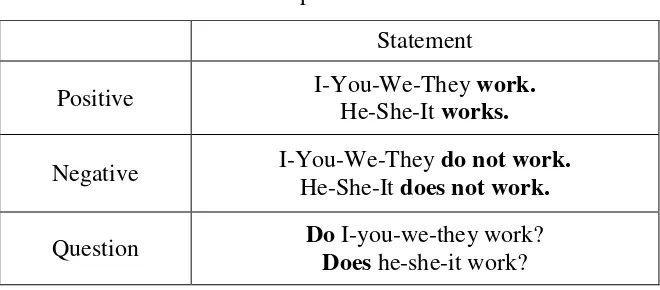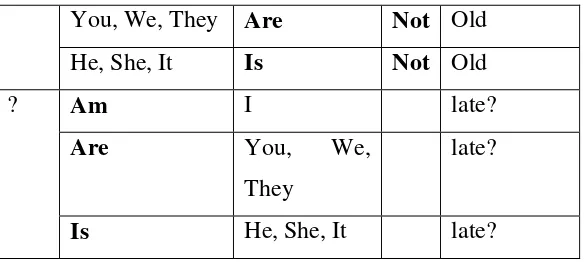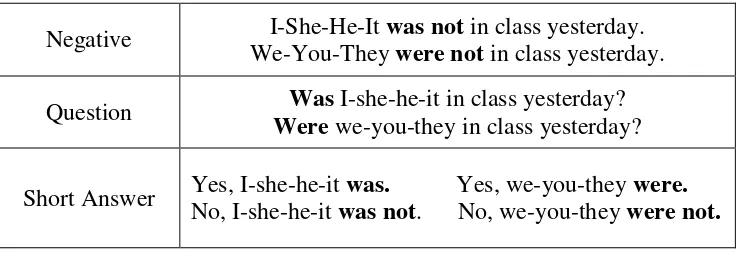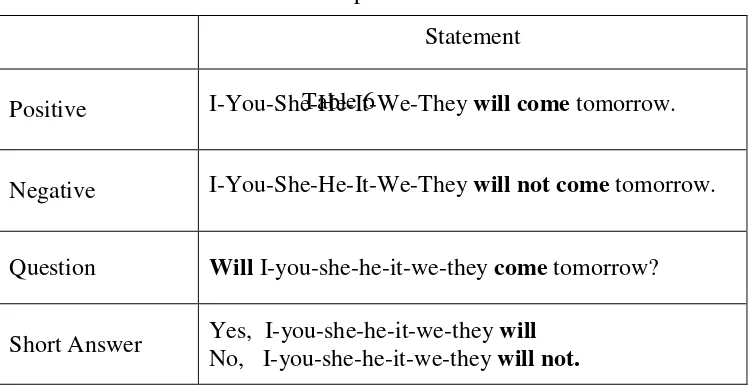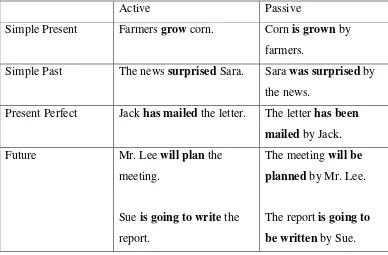4 CHAPTER II LITERATURE REVIEW
2.1 Error Analysis
2.1.1 Definition of Error Analysis
According to Richards in Emmaryana (2010; 5), error analysis is an activity to reveal errors found in writing and speaking. Error analysis also is the study of errors made by the second and foreign language learners. Error analysis
may be carried out in order to (a) find out how well someone knows a language, (b) find out how a person learns a language, and (c) obtain information on common difficulties in language learning, as an aid in teaching or in the preparation of teaching materials. Another concept of error analysis is given by Brown. He defined error analysis as the process to observe, analyze, and classify the deviations of the rules of the second language and then to reveal the systems operated by learners. From the two definitions above, it can be concluded that error analysis is an activity to identify, classify and interprete or describe the errors made by someone in speaking or in writing and it is carried out to obtain information on common difficulties faced by someone in speaking or in writing English sentences.
2.1.2 Types of Errors
Dulay in Kuntjara (2013; 2-5) divides errors into 5 types. They are Omission, Addition, Misformation, Misordering, and Blends.
a. Omission
For example: “My mother smart cooking.” It should be, “My mother is smart in cooking.”
b. Addition.
Addition is any usage of unnecessary items in the sentences. Addition is indicated by the presence of an ‘unwanted’ item in sentences. The unwanted items do not appear in a well-formed utterance. This happens when the learners overuse certain grammatical rules of the target language. For example: “He does not to come.” It should be, “He does not come.”
c. Misformation
Misformation is any wrong form of certain morphemes or structures. Misformation is indicated by the usage of wrong forms of certain
morphemes or structures. For example: “Me don’t like.” It should be, “I don’t like.”
d. Misordering
Misordering is any incorrect placement of certain morphemes in sentences. For example: “She fights all the time her brother.” It should be “She fights her brother all the time.”
e. Blends
Blends occur when two or more morphemes that have the same function appear in a sentence. For example: “The only one thing I want.” It should be “The only thing I want.”
2.1.3 Steps in Conducting Error Analysis
Corder in Kuntjara (2013; 2) distinguishes five steps in conducting error analysis.
this step, the researcher may control the data by narrowly specifying the samples he/she intends to collect.
b. Identify the errors. The identification of errors involves a comparison between learners’ sentences and native speakers’ sentences in the same context. Then, the researcher can identify which part of learners’ sentences is different from the “reconstructed version.”
c. Describe the errors. The description of errors usually employs either linguistic taxonomy or surface structure taxonomy to describe the differences between learner’s sentences and native speakers’ sentences. d. Explain the errors. Explaining errors involves determining their sources in
order to account for why they were made
e. Evaluate the errors. Error evaluation is a supplementary stage in error analysis.
2.1.4 Causes of Errors
Norrish in Hasyim (2006; 6) classifies causes of error into three types that is carelessness, first language interference, and translation. The three types of causes of error will be discussed briefly below.
a. Carelessness. It is often closely related to lack of motivation. Many teachers will admit that it is not always the student’s fault if he loses interest, perhaps the materials and/or style of presentation do not suit him.
b. First language. Norrish states that learning a language (a mother tongue or a foreign language) is a matter of habit formation. When someone tries to learn new habits the old ones will interfere the new ones. This cause of error is called first language interference.
c. Translation. It is one of the causes of errors. This happens because a student
2.1.5 Sources of Errors
Selinker in Nzama (2010; 22) states that there are five sources of errors. They are as follows:
a. Language transfer. There is positive transfer that helps the learning of second language. There is also negative transfer, which hinders the learning of second language. Language transfer involves pronunciation, word order and grammars, semantic transfer, transfer in writing, pragmatic transfer and
culture transfer.
b. Transfer of training. Transfer of training occurs whenever the effects of prior learning influence the performance of a later activity. Transfer of training is the influence of prior learning on performance in a new situation. c. Strategies of second language learning. This is an attempt to develop
linguistic and sociolinguistic competence in the target language.
d. Strategies of second language communication. This consists of attempts to deal with problems of communication that have arisen in interaction. e. Overgeneralization of the target language (TL). This happens when a
second language leaner applies a grammatical rule across all members of a grammatical class without making the appropriate exception.
In this final report, writer limits the scope of discussion. The writer would like to analyze the errors grammatically, such as verbs, conjunctions, passive voice, and gerund. However, if there are other kinds of grammatical errors found in the research, they will also be discussed too.
2.2 Grammatical Errors Most Commonly Found 2.2.1 Verb in Tenses
says that there are 16 tenses in English, but generally divided into 12 kinds. English tenses can be interpreted simply as a sentence patterns change over the time; referring to the past (Past), present (Present) and future (Future). In this part, the writer will discuss four fundamental types of tenses; Simple Present Tense, Simple Past Tense, Simple Future Tense, and also Present Perfect Tense.
a. Simple Present
The simple present expresses daily habits or usual activities. It also
expresses general statement of facts. The simple present is used for events or situations that exist always, usually, or habitually in the past, present, and future. For example: “Ann takes a shower every day.”
Here is the form of the Simple Present: Verb
Table 1: Simple Present Tense
Statement
Positive I-You-We-They work.
He-She-It works.
Negative I-You-We-They do not work. He-She-It does not work.
Question Do I-you-we-they work? Does he-she-it work?
Moreover, look at this form of the Simple Present: Be Table 2: Simple Present Tense Using Be
Subject main verb
+ I Am French
You, We, They Are French
He, She, It Is French
You, We, They Are Not Old
He, She, It Is Not Old
? Am I late?
Are You, We,
They
late?
Is He, She, It late?
b. Simple Past
Azzar (1941; 25-26) says that the simple past is used to talk about activities or situations that began and ended in the past. Most simple past verbs are formed by adding –ed to a verb, and some verbs have irregular past forms. For example: “Mary walked downtown yesterday.”
Here is the form of the Simple Past: Regular verbs
Table 3: Simple Past Tense Using Regular verbs Statement
Positive I-You-She-He-It-We-They worked yesterday.
Negative I-You-She-He-It-We-They did not work yesterday.
Question Did I-you-she-he-it-we-they work yesterday?
Short Answer Yes, I-you-she-he-it-we-they did. No, I-you-she-he-it-we-they did not.
Here is the form of the Simple Past: be
Table 4: Simple Past Tense Using be Statement
Negative I-She-He-It was not in class yesterday. We-You-They were not in class yesterday.
Question Was I-she-he-it in class yesterday? Were we-you-they in class yesterday?
Short Answer Yes, I-she-he-it was. Yes, we-you-they were. No, I-she-he-it was not. No, we-you-they were not.
c. Simple Future
Azzar (1941; 56) states that “be going to” and “will” are used to express future time. Be going to is used to express a prior plan. For example: “I bought some some wood because I am going to build a bookcase for my apartment.” The speaker plans to build a bookcase. Meanwhile, Will is used to express a decision the speaker makes at the moment of speaking. For example: “This chair is too heavy for you to carry alone. I’ll help you.” The speaker decides to help at the immediate present moment; he did not have a prior plan to help.
Here is the form of the Simple Future with Be Going To. Table 5: Simple Future with Be Going To.
a.We are going to be late.
b.She’s going to come tomorrow.
Be going to is followed by the
simple form of the verb.
c.I am not going to be late.
He, she, it is not going to be late. They, we, you are not going to be late.
Negative: be + not + going to
d. Am I going to be late? Is he, she, it going to be late? Are they, we, you going to be late?
Question: be + subject + going
Here is the form of the Simple Future with Will.
Table 6: Simple Future with Will
Table 6
d. Present Perfect
Azzar (1941; 86) declares that the present perfect expresses an activity or situations that occurred (or did not occur) before now, at some unspecified time in the past. For example:
“Jim has already eaten lunch.”
Jim’s lunch occurred before the present time. The time in activity is not important or unknown. For the speaker, the only important information is that Jim’s lunch occurred in the past, sometime before now.
Here the form of the present perfect tense.
Table 7: Present Perfect Tense Statement
Positive I-You-She-He-It-We-They will come tomorrow.
Negative I-You-She-He-It-We-They will not come tomorrow.
Question Will I-you-she-he-it-we-they come tomorrow?
Short Answer Yes, I-you-she-he-it-we-they will No, I-you-she-he-it-we-they will not.
Statement
2.2.2 Coordinating Conjunctions
Rahman (2012; 27) states that coordinating conjunctions are connectors of two or more elements that have the same syntactic interests. Ramsey (2014; 2) also says that coordinating conjunctions join two independent clauses to make a compound sentence.
There are seven kinds of coordinating conjunctions; For, And, Nor, But, Or, Yet, So. In this part, the writer would like to discuss only two kinds of coordinating conjunctions; And and But.
a. And
According to Azzargrammar (2002; 3), “and” connects parallel elements, i.e., elements having the same structure. These elements may be compound
subjects, verbs, or objects or may be two independent clauses.
When “and” connects only two items within a sentence, no comma is used. When “and” connects three or more items in a series in a sentence, comma is used. For example:
They saw a cat and a mouse.
He saw a cat, a mouse, a man, and a woman. (And connects nouns) I opened the door, walked into the room, and sat down at my desk (And
connect verbs).
Their flag is red, yellow, and black. (And connects adjectives) Negative I-You-We-They have not finished that homework.
She-He-It has not finished that homework.
Question Have I-you-we-they finished that homework? Has she-he-it finished that homework?
b. But
Based on the grammarcommet (2013; 1) , there are some usages of “but”. They are:
To suggest a contrast that is unexpected in light of the first clause: "Joey
lost a fortune in the stock market, but he still seems able to live quite comfortably."
To suggest in an affirmative sense what the first part of the sentence
implied in a negative way (sometimes replaced by on the contrary): "The club never invested foolishly, but used the services of a sage investment counselor."
To connect two ideas with the meaning of "with the exception of" (and
then the second word takes over as subject): "Everybody but Goldenbreath is trying out for the team."
2.2.3 Gerund
According to Azzar (1941; 368), gerund is the –ing form of a verb. It is used as a noun. Because their function is that of a noun, gerunds may be used as the subject of a sentence. For example:
Running regularly will make you feel better. Studying requires most of my time during the day.
The -ing form can also be called a present participle; however, the function is that of a verb when used in the present or past progressive. For example: The teacher is speaking to her students.
If a gerund is combined with a preposition, it is called a Gerund phrase. For example: Our daughter's life ambition is studying to be a doctor.
To mind To enjoy To finish To imagine To give up To consider To risk To avoid To deny To suggest To keep on To leave off To feel like.
For example: I don’t mind watching this film
2.2.4 Passive Voice
Accordng to Silitonga (2012; 1), passive voice is a grammatical construction which the subject of the sentence or clause indicates the recipient of the action. In English, passive sentences formed with an auxiliary verb and past participle form of verb. Meanwhile, Ardika (2011; 1) says that passive voice is the sentence which the subject of it has the main work given by the object. The object of active voice is more important information than the subject in passive voice. From the two definitions, passive voice can be concluded as a sentence which the subject of it changes as the object and given the work by the object.
Azzar (1950; 120), in the passive, the object of an active verb becomes the subject of the passive verb.
Active : (a) Mary helped the boy.
“The boy” in (a) becomes the subject of the passive verb in (b). (a) and (b) have the same meaning.
According to Hallan and Nirron (1983; 20), to change an active sentence into passive, it can be done by placing an auxiliary verb (be) and the Past Participle form of verb into the active sentence.
For example: Active : They cook the food.
Passive : The food is cooked by them. Active : Someone gave me a book.
Passive : I was given a book by someone. Here is the form of the Passive Voice. Azzar (1941; 277)
Table 8: Passive Voice
Be + Past Participle (a) Corn is grown by farmers. (b) Sara was surprised by the news.
(c) The report will be written by Mary.
Form of all passive verbs: Be + Past Participle Be can be in any of its forms: am,
is, are, was, were, has been, have been, will be, etc.
Table 9: The Use of Passive Voice
Active Passive
Simple Present Farmers grow corn. Corn is grown by farmers.
Simple Past The news surprised Sara. Sara was surprised by the news.
Present Perfect Jack has mailed the letter. The letter has been mailed by Jack.
Future Mr. Lee will plan the meeting.
Sue is going to write the report.
The meeting will be planned by Mr. Lee.
2.3Guidebook
2.3.1 Definition of Guidebook
Fitroni and Primayudi (2013; 2) say that guidebook is one of the media that contains complete contents of tourism and information that exist in a city or tourist sites. Meanwhile, Oxford Learner’s pocket dictionary on page 197 defines guidebook as a book with information about a place for travelers. Therefore, it can be concluded that guidebook is media that gives information about the tourism object in a certain area.
2.3.2 The Function and Role of Guidebook
According to Muliowati (2013; 1), tourism development in Indonesia requires some factors that can support the development of tours in Indonesia, among other factors such as promotion, infrastructure and infrastructure adequate, natural resources, and human resources. One of the factors that supports the development of tourism in Indonesia is a guidebook. Although its existence is often regarded merely as a conduit of information, but this guide has also an important role, because through it, promotion can be done.
Guidebooks should be provided in almost all the tourism objects, so people can easily get the information in the guidebook. In order to achieve this, there are some factors that must be considered in making the guidebook. Do not let the guidebook seen as a conduit of information books, but the guidebook should be interesting in shape and use good language, in right grammar so the local or foreign tourists have the information they need.
Fitroni and Primayudi (2013; 4) say that the potential guidebook is very important, especially in times of special events such as "Visit Indonesia 2012", to introduce regional attractions in the areas which still has an unspoiled natural beauty. Potential travel guidebook is an instrumental in introducing a tourist attraction and providing information that is easily understood by the tourists both foreign and domestic. Therefore, travel guidebook should be designed in two
